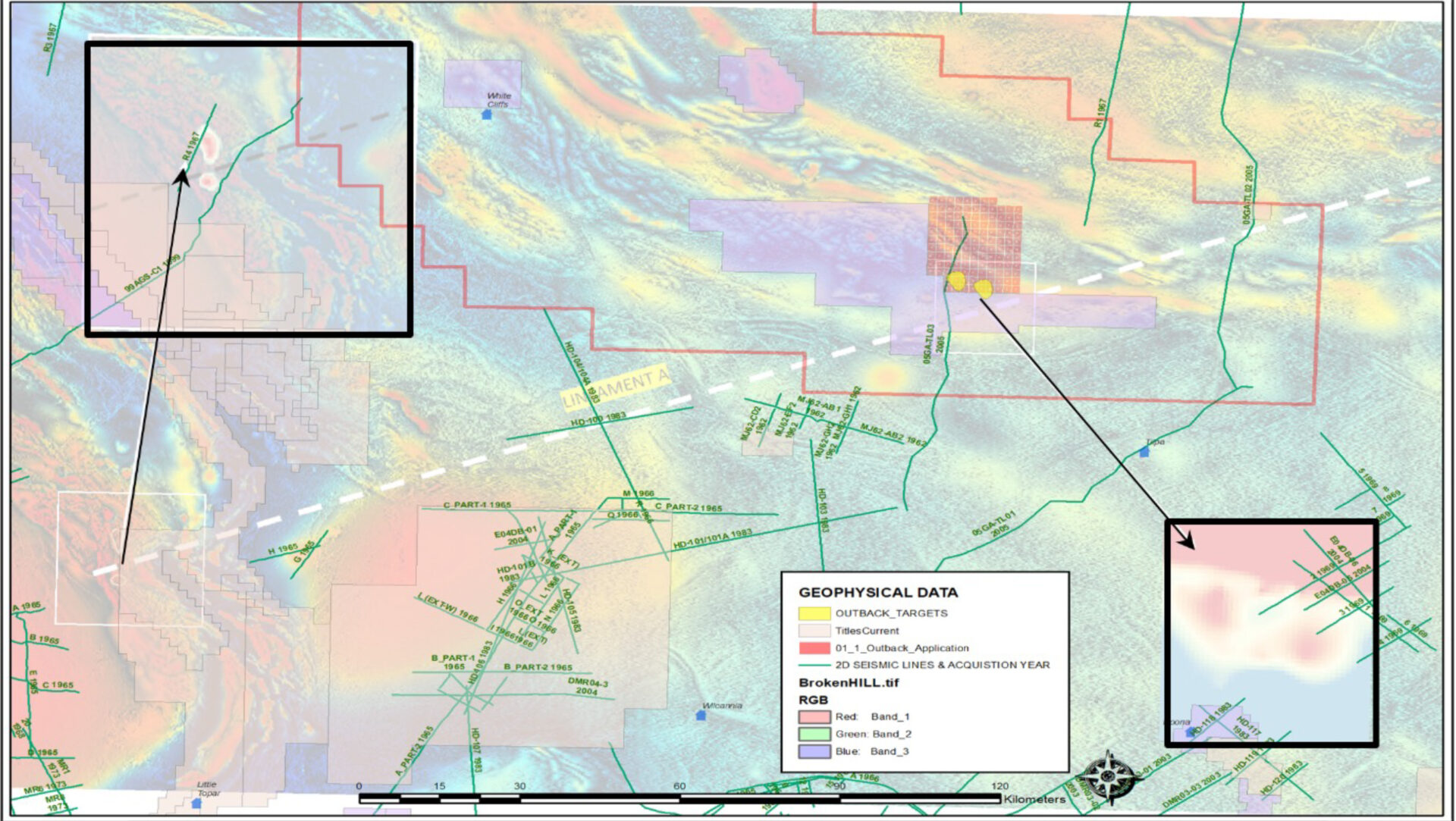Leading sustainable exploration for future resources
Situated 200km NW of Cobar and SW of Bourke, the remote Cobar Project is located on the southern margin of the Thomson Orogen close to the interpreted contact with the Lachlan Fold Belt and the Delamerian Orogen, Figure 1. The area is situated on the northern edge of the interpreted path of the Olepoloko Fault. The 90 km2 holding provides opportunity for a Belt Scale Exploration Opportunity.
Across the EL9145 tenement, WMR have identified the relationship between the Thomson and Lachlan fold belts. A flexure in the volcanic arc indicates the extension of the heavily mineralised Lachlan Fold belt beneath the cover of a thin veneer of Mesozoic rocks. The region remains underexplored and highly prospective.
The Lachlan Fold belt is one of the world’s great metallogenic provinces, boasting more than $200B in metal production including Gold, Copper, Lead and Zinc. The province host more than 3000 mineral deposits, including 24 porphyry copper-gold systems such as Cadia- Ridgeway. It is also home to the high-grade base metal deposits of the Cobar Basin. The Thomson Fold Belt (TFB) forms part of the Tasmanides, a collage of four orogenic belts resulting from the interaction of the Gondwanan Australian craton with the proto-Pacific plate between 550 and 210 million years ago.
The TFB has been described as a distinct geological province based on its east-west trend in NSW, which distinguishesit from the north-south trend of the adjoining Lachlan and Delamerian Fold Belts. In work completed by WMR since the tenement has been granted interprets this trend difference as a flexure or bend in the ancient volcanic arc, and that they are not separate provinces.
In EL9145, WMR is interested in further investigation of deep faulting systems acting as migration pathways formineralised fluids, either from basin dewatering events or local S-type/I-type Devonian intrusions. Research suggests that in the Cobar Basin faults are responsible for generating structurally complex domains, where mineralised fluids migrate and trap/host ore deposits in various types of stratigraphy, including sandstone, siltstone, and shale.
A key analysis step going forward is to unlock the structural framework with an in-depth interrogation of the 2005 2D seismic lines through the heart of the project area, Figure 2.
WMR believe the Project contains significant potential for an intrusion related gold and copper discovery. Preliminary reviews have indicated the possibilities for multiple precious and base metal mineralised systems, containing highly altered rocks, anomalous geochemistry and disseminated/vein base metal sulphides like Cobar type deposits. Several bullseye type anomalies in the south of the project provide key areas of interest and development, Figure 3. A developing focus in the area is sure to generate drilling targets soon.


